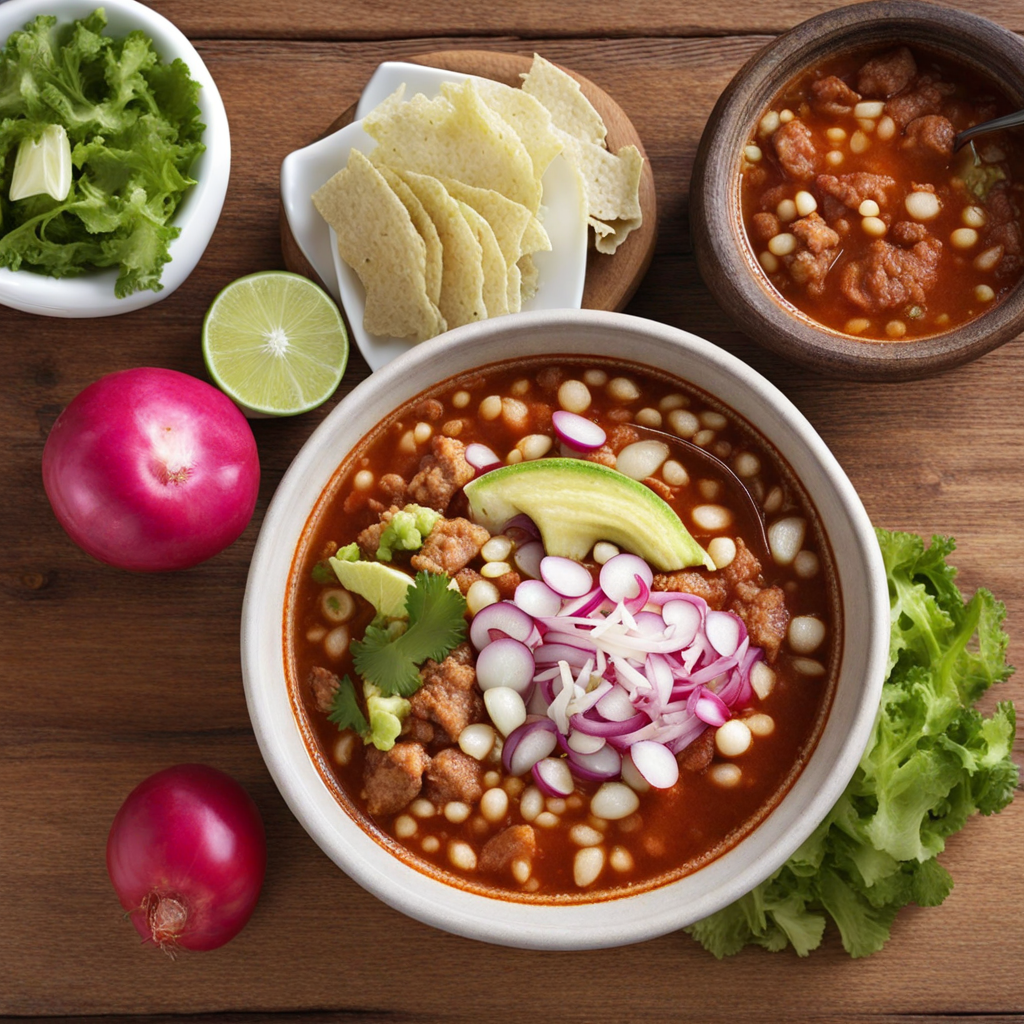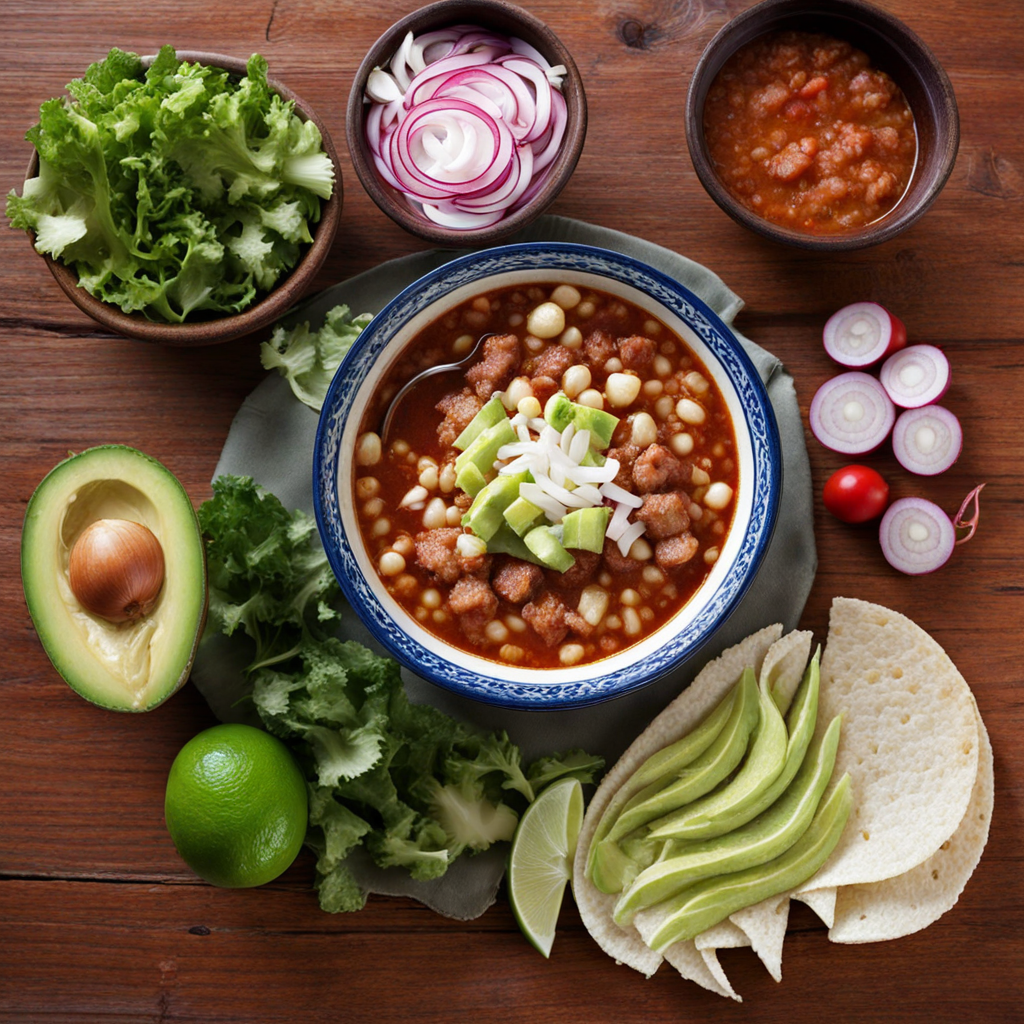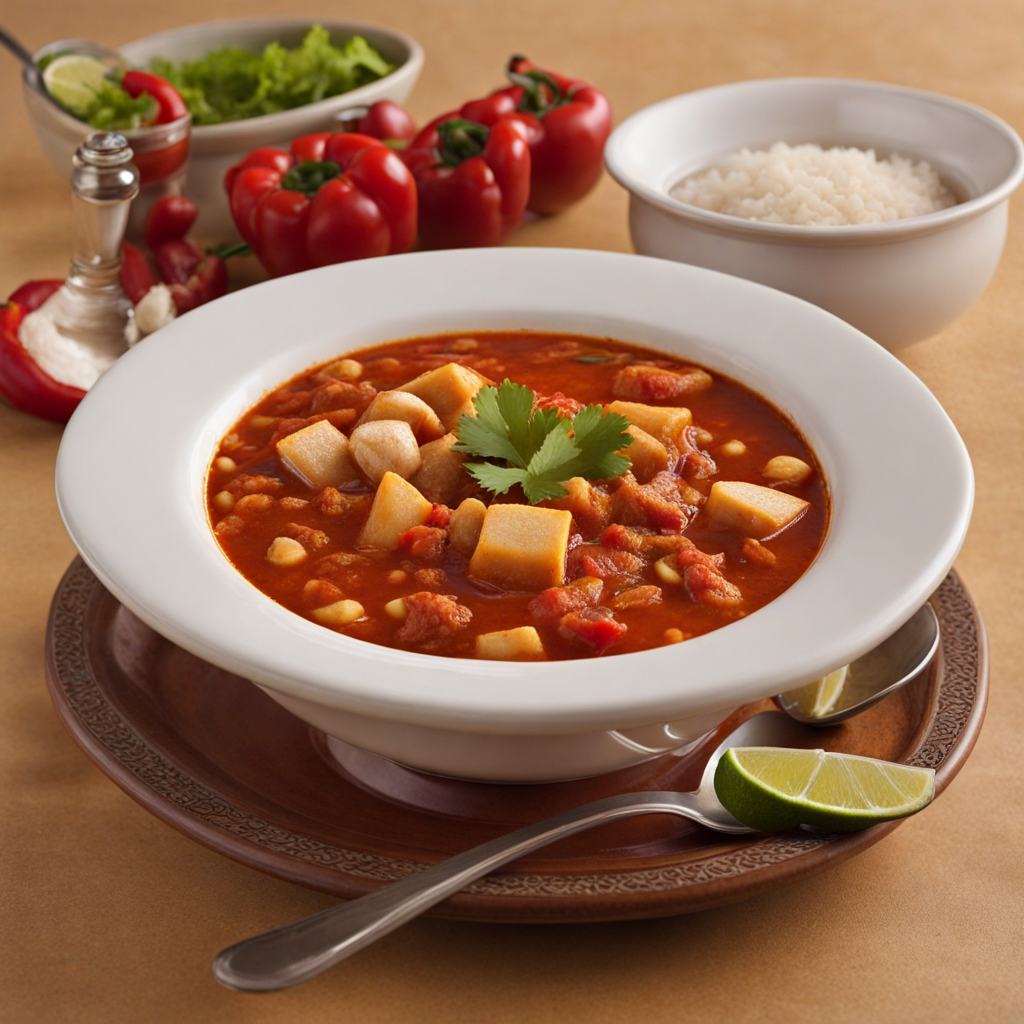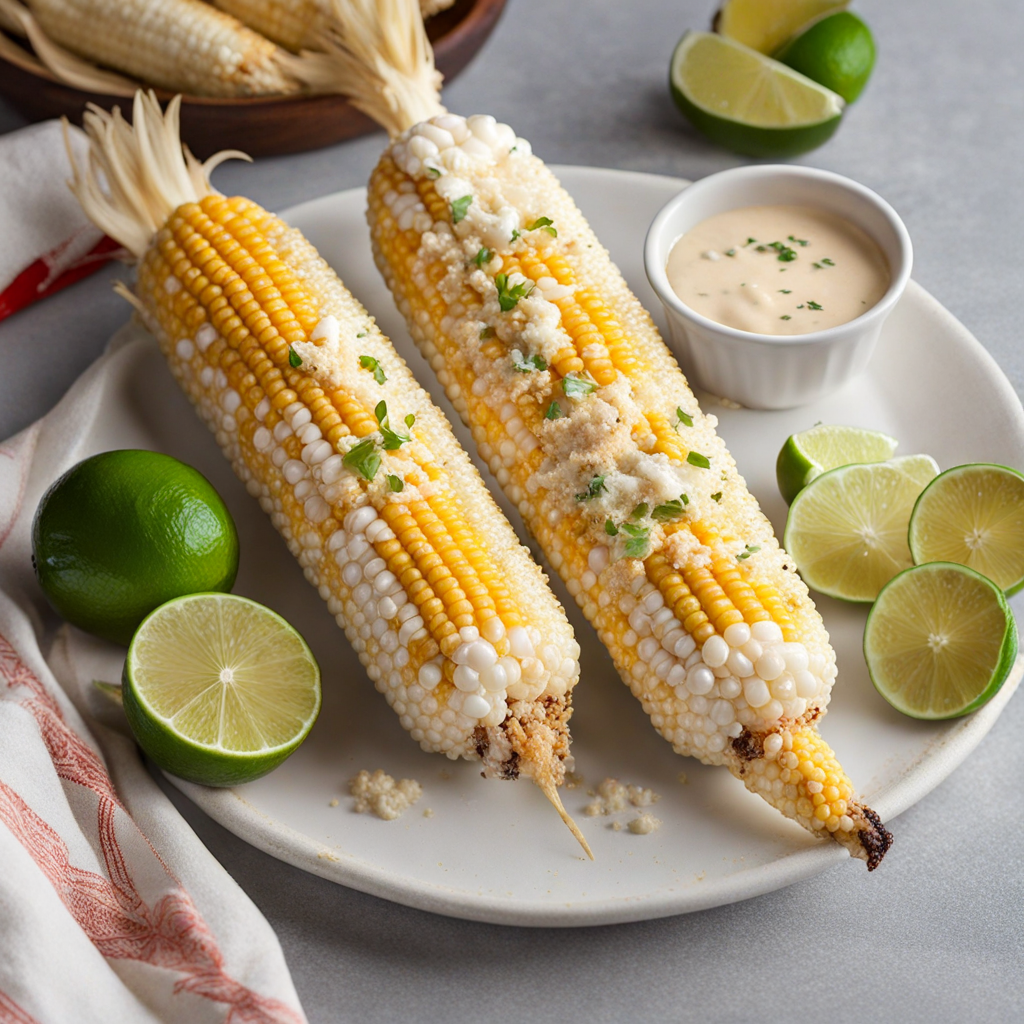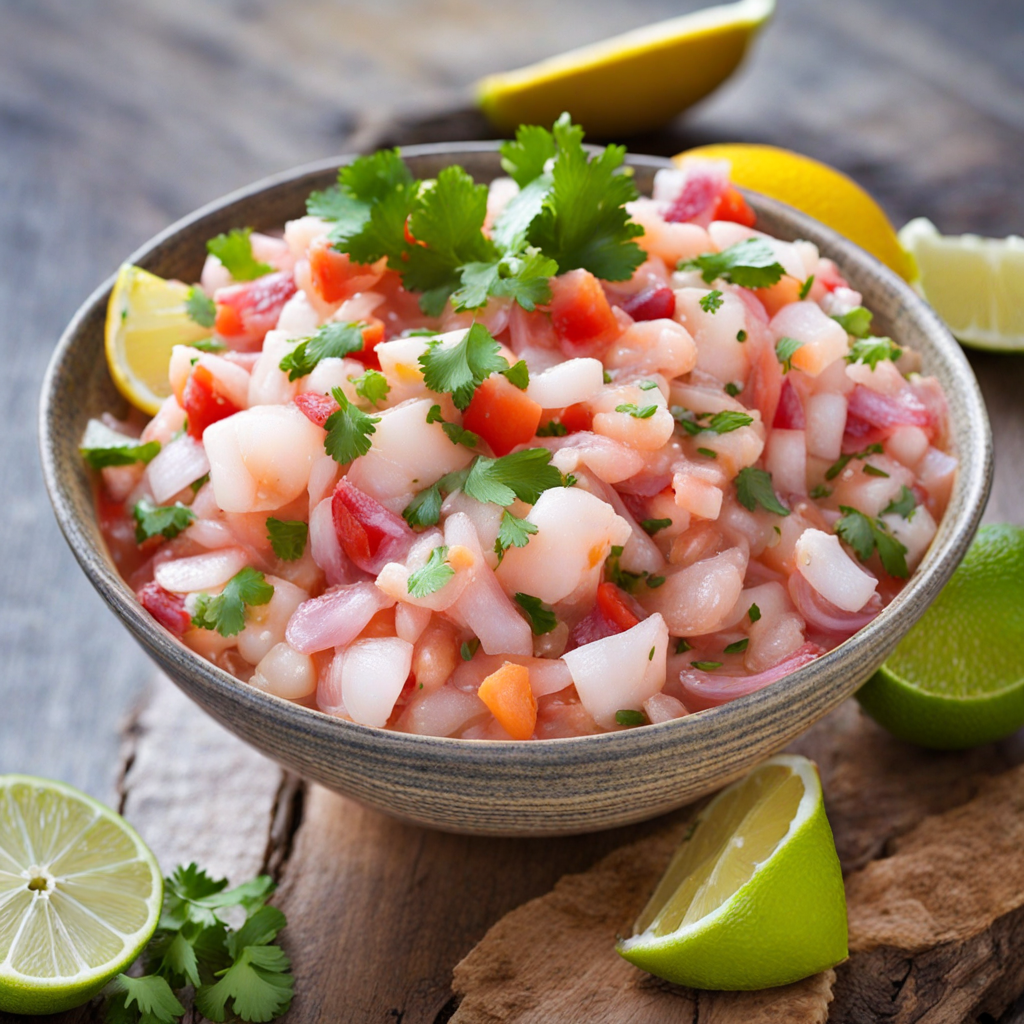Pozole
Pozole is a traditional Mexican soup that boasts a rich history and a vibrant flavor profile. At its core, this hearty dish is made from hominy, which are dried corn kernels that have been treated with an alkali, resulting in a unique texture and a slightly sweet taste. The hominy is simmered in a savory broth, typically made from either chicken or pork, creating a comforting base that is both nourishing and satisfying. The dish is often seasoned with a blend of spices, including cumin, oregano, and garlic, which infuse the soup with a warm and aromatic essence, making each spoonful a delightful experience for the senses. Pozole is celebrated for its versatility, as it can be customized with various toppings that enhance its flavors and textures. Common garnishes include shredded cabbage, radishes, onion, avocado, and lime, allowing diners to personalize their bowl to their liking. Additionally, a drizzle of red or green salsa can add a kick of heat, making it a dish that caters to diverse palates. The combination of the tender meat, chewy hominy, and fresh toppings creates a wonderful balance of flavors and crunch, elevating the dish to a true culinary delight. This beloved soup is often enjoyed during festive celebrations and gatherings, making it a communal dish that brings people together. Whether served during holidays such as Christmas or as part of a family gathering, pozole is more than just a meal; it’s an experience that embodies the warmth and spirit of Mexican culture. As you delve into a bowl of pozole, you not only savor the delicious taste but also partake in a tradition that has been passed down through generations, making every bite a connection to the heart of Mexico.
How It Became This Dish
The Rich History of Pozole: A Culinary Tradition of Mexico Pozole, a beloved traditional soup from Mexico, is celebrated for its rich flavors, hearty texture, and deep cultural roots. With origins dating back to pre-Columbian times, pozole is not just a dish but a symbol of Mexican heritage and communal identity. Its history is woven with threads of indigenous practices, colonial influences, and regional variations that reflect Mexico's vibrant tapestry. Origins in Pre-Columbian Mexico The origins of pozole can be traced back to the ancient civilizations of Mesoamerica, particularly the Aztecs. The word "pozole" derives from the Nahuatl term "pozolli," which means "frothy" or "bubbly," describing the soup's texture. Historically, pozole was made from hominy—dried corn kernels treated with an alkali solution, a process known as nixtamalization, which enhances the nutritional value of corn and makes it easier to digest. In Aztec society, pozole was a ceremonial dish often made with the meat of sacrificial victims, highlighting its sacred significance. It was believed that consuming the dish connected individuals to their gods and ancestors. The preparation of pozole was a communal activity, typically reserved for special occasions, such as religious ceremonies, weddings, and celebrations of harvest. The ritualistic aspect of making pozole emphasized the importance of community and the sharing of food as a means of fostering social bonds. Colonial Influences and Adaptation The arrival of Spanish colonizers in the 16th century brought significant changes to Mexican cuisine, including pozole. While the indigenous people continued to prepare their traditional versions, the Spanish introduced new ingredients such as pork and chicken, which soon became popular additions to the dish. This adaptation marked the beginning of regional variations of pozole, as different areas of Mexico incorporated local ingredients and cooking styles. In the colonial era, pozole transitioned from a sacred dish to one enjoyed by a broader audience. It became a staple in the diets of both indigenous and mestizo populations, symbolizing the blending of cultures. The Spanish influence also brought new cooking techniques, such as the use of spices, which enriched the dish's flavor profile. Regional Variations As pozole spread throughout Mexico, distinct regional variations emerged, each reflecting local ingredients and cultural practices. The most notable types of pozole include: 1. Pozole Blanco: Originating from central Mexico, this version is characterized by its clear broth, often made with pork or chicken. It is typically garnished with shredded lettuce, radishes, onions, and lime, allowing diners to customize their bowls to their liking. 2. Pozole Rojo: This variation, particularly popular in the states of Jalisco and Guerrero, is made with a red chili sauce, giving the soup a vibrant color and a spicy kick. The use of guajillo or ancho chilies lends a depth of flavor that distinguishes it from its white counterpart. 3. Pozole Verde: Hailing from the state of Guerrero, pozole verde features a green sauce made from tomatillos, cilantro, and green chilies. This fresh and zesty version is often served with similar garnishes to pozole blanco. 4. Pozole de Puerco: In many regions, especially in the southern states, pozole is traditionally made with pork. The meat is simmered to tender perfection, infusing the broth with rich flavors. 5. Pozole de Pollo: In certain communities, especially those with a strong indigenous influence, chicken is the preferred meat. This variant is lighter and often includes additional vegetables. These regional variations not only highlight the diversity of Mexican cuisine but also tell the story of the people and places that contribute to the dish's evolution. Each bowl of pozole carries the essence of its region, from the ingredients used to the way it is served and enjoyed. Cultural Significance Pozole is more than just a comforting dish; it is a vital part of Mexican culture and identity. Traditionally served during important celebrations, such as Independence Day, Christmas, and Día de los Muertos (Day of the Dead), pozole embodies the spirit of togetherness and festivity. Families gather to prepare and share the dish, reinforcing bonds and creating cherished memories. During Día de los Muertos, for instance, pozole is often served as a way to honor deceased loved ones. The vibrant flavors and communal nature of the dish reflect the belief in the continuity of life and the importance of remembering those who have passed. Pozole also plays a role in social gatherings, from casual family meals to large community feasts. Street vendors often sell pozole at markets and fairs, making it accessible to all and emphasizing its status as a popular street food. The act of sharing a bowl of pozole transcends social barriers, inviting everyone to partake in the experience. Modern Adaptations and Global Recognition In recent years, pozole has seen a resurgence in popularity, both within Mexico and internationally. Chefs and home cooks alike are experimenting with traditional recipes, incorporating modern techniques and innovative ingredients while still honoring the dish's roots. This evolution has led to fusion variations, such as pozole tacos or pozole with unique toppings. The global interest in Mexican cuisine has also brought pozole to the forefront of culinary conversations, with food festivals and restaurants showcasing this traditional dish. Its presence in international food markets highlights the growing appreciation for authentic Mexican flavors and the stories they carry. Conclusion Pozole is a culinary treasure that encapsulates the rich history and cultural significance of Mexico. From its ancient origins as a sacred dish to its contemporary status as a beloved comfort food, pozole is a testament to the resilience and creativity of Mexican culinary traditions. It serves as a reminder of the importance of community, celebration, and the shared experience of food. As we continue to explore and honor the flavors of the past, pozole remains a vibrant symbol of Mexico's rich heritage, inviting us all to gather around the table and share in its warmth and history. Whether enjoyed in a bustling market or at a family gathering, each bowl of pozole tells a story, connecting us to the past while nourishing our present.
You may like
Discover local flavors from Mexico


